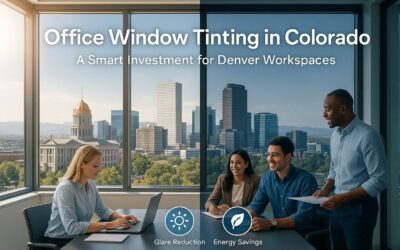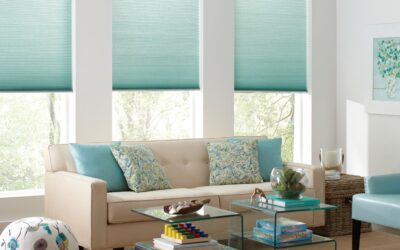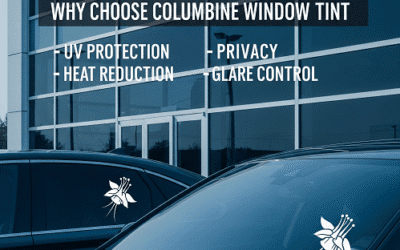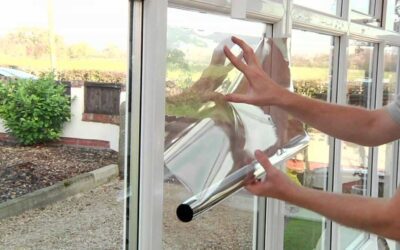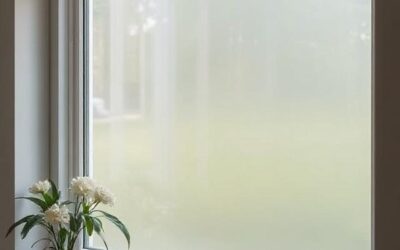The ROI of Window Tinting: Calculating the Cost Savings and Long-Term Benefits
Understanding ROI in Window Tinting
Definition of ROI in the Context of Window Tinting
ROI, or Return on Investment, measures the profitability of an investment relative to its cost. In window tinting, ROI is calculated by comparing the upfront cost of installation to the long-term financial benefits it provides. These benefits include energy savings, increased property value, reduced maintenance costs, and enhanced comfort. For both homeowners and businesses, understanding ROI is crucial to making informed decisions about window tinting investments.
Importance of ROI for Homeowners and Businesses
For homeowners, window tinting is more than just an aesthetic upgrade—it’s a financial strategy. By calculating the ROI, homeowners can determine how quickly their investment in window tinting will pay off through energy savings and increased property value. Businesses, on the other hand, are concerned with both the immediate and long-term financial impacts. A positive ROI indicates that window tinting is not just a cost but a revenue-generating asset that contributes to overall business efficiency and profitability.
Initial Costs of Window Tinting
Breakdown of Costs for Residential Window Tinting
The cost of residential window tinting varies based on factors like film type, window size, and the number of windows being tinted. On average, homeowners can expect to pay between $5 and $12 per square foot. Premium films that offer additional benefits, such as UV protection and enhanced security, may cost more. Installation fees also vary depending on the complexity of the job, with larger, multi-story homes requiring more labor.
Commercial Window Tinting Costs: What to Expect
Commercial window tinting typically involves larger surface areas, which can result in lower costs per square foot compared to residential projects. However, commercial installations may require specialized films, such as anti-glare or heat-reducing tints, which can increase the overall expense. On average, businesses can expect to pay between $6 and $15 per square foot, depending on the film’s performance and the building’s architectural complexity.
Factors Affecting Installation Costs
Several factors influence the cost of window tinting installations. These include the type and quality of the film, the size and shape of the windows, and whether the installation requires additional labor, such as removing old tint or working with unusual window shapes. The location of the property can also impact costs, as some areas may have higher labor rates or require specific types of film to comply with local regulations.
Energy Savings
How Window Films Reduce Energy Consumption
Window tinting films act as a barrier against solar heat, reducing the amount of heat that enters a building. By blocking up to 80% of the sun’s heat, these films lower indoor temperatures, reducing the need for air conditioning. This results in significant energy savings, particularly during the summer months when cooling costs are highest. In winter, window films can also help retain heat, reducing the need for heating.
Seasonal Energy Savings: Summer vs. Winter
The energy savings from window tinting are most noticeable during extreme weather conditions. In summer, the reduction in solar heat gain can lead to a 10% to 30% decrease in cooling costs. During winter, while the savings are generally lower, the films still provide an insulating effect that helps retain indoor heat, leading to a 5% to 15% reduction in heating expenses. These seasonal savings contribute to a year-round decrease in energy consumption and lower utility bills.
Long-Term Energy Cost Reductions
Over time, the energy savings generated by window tinting add up, leading to a substantial reduction in overall energy costs. For most homeowners and businesses, these savings can cover the initial investment in window tinting within 3 to 5 years. As energy prices continue to rise, the long-term financial benefits of window tinting become even more pronounced, making it a smart investment for anyone looking to reduce their carbon footprint and save on energy expenses.
Increased Property Value
The Impact of Window Tinting on Property Appraisal
Window tinting can enhance a property’s value by improving its energy efficiency, comfort, and aesthetic appeal. Homes and businesses with energy-efficient upgrades, such as window tinting, often appraise higher because they offer lower operating costs and better environmental performance. Appraisers consider these factors when determining the market value of a property, and energy-efficient features can result in a higher appraisal value.
Window Tinting as an Investment in Property Aesthetics
Beyond the functional benefits, window tinting also enhances a building’s visual appeal. Tinted windows provide a sleek, modern look that can improve curb appeal and attract potential buyers or tenants. For businesses, a professional appearance is critical, and window tinting can contribute to a more polished and inviting facade. This aesthetic upgrade can make a property more attractive in the market, increasing its value.
Market Trends: Tinting’s Role in Real Estate Value
As sustainability becomes a key concern for buyers and investors, properties with energy-efficient features, such as window tinting, are becoming more desirable. This trend is particularly strong in urban areas where energy costs are higher, and environmental awareness is growing. In the real estate market, energy-efficient properties often sell faster and at higher prices, making window tinting a valuable addition for homeowners and commercial property owners looking to maximize their investment.
Maintenance Cost Reductions
Durability and Longevity of Modern Window Films
Modern window films are designed to be durable and long-lasting, with many products offering warranties of 10 to 15 years or more. These films are resistant to fading, peeling, and bubbling, ensuring that they maintain their effectiveness and appearance over time. The durability of window films means that homeowners and businesses can enjoy the benefits of window tinting without the need for frequent replacements or repairs, reducing long-term maintenance costs.
How Tinting Reduces Wear and Tear on HVAC Systems
By reducing the amount of heat that enters a building, window tinting lessens the load on HVAC systems, leading to less frequent use and lower energy consumption. This reduction in demand extends the lifespan of heating and cooling systems, reducing the need for costly repairs and replacements. In commercial settings, where HVAC systems are often running continuously, the savings on maintenance and energy costs can be significant.
Lower Cleaning and Maintenance Expenses
Tinted windows are easier to maintain because they reduce the amount of sunlight that enters a building, leading to less fading and wear on furniture, carpets, and other interior elements. This preservation of interior spaces means less frequent cleaning and maintenance, which translates to lower costs over time. Additionally, the protective layer provided by window films can make windows easier to clean, as they reduce the buildup of dust and grime.
Enhanced Comfort and Productivity
The Role of Window Tinting in Temperature Regulation
Window tinting helps regulate indoor temperatures by blocking out excessive heat during the summer and retaining warmth during the winter. This creates a more comfortable living or working environment, free from the discomfort of hot spots or drafts. In residential settings, this improved comfort contributes to a better quality of life, while in commercial spaces, it can lead to increased productivity among employees.
Improving Indoor Comfort in Homes and Offices
For homeowners, window tinting can create a more comfortable and enjoyable living space by reducing glare, preventing UV damage, and maintaining consistent indoor temperatures. In offices, a comfortable environment is directly linked to employee satisfaction and productivity. By minimizing glare on computer screens, reducing eye strain, and maintaining a stable indoor climate, window tinting can enhance the overall comfort of the workspace, leading to happier, more productive employees.
Productivity Boosts in Commercial Spaces Due to Tinting
In commercial settings, the benefits of window tinting extend beyond energy savings and aesthetics. By creating a more comfortable working environment, window tinting can lead to increased employee productivity. Studies have shown that employees who work in comfortable, well-lit environments are more focused and efficient. By reducing glare, improving temperature control, and enhancing privacy, window tinting helps create an optimal work environment that supports higher levels of productivity.
UV Protection and Health Benefits
Cost Savings from Reduced UV Damage to Interiors
One of the most significant benefits of window tinting is its ability to block up to 99% of harmful UV rays. This protection prevents fading and damage to furniture, flooring, and other interior elements, reducing the need for costly replacements and repairs. Over time, the savings from reduced UV damage can be substantial, especially for businesses with large investments in interior design and furnishings.
Health-Related Savings: Protecting Occupants from UV Exposure
Prolonged exposure to UV rays is linked to various health issues, including skin cancer and premature aging. By blocking UV rays, window tinting provides an additional layer of protection for occupants, reducing their risk of health problems associated with UV exposure. This protection can result in long-term health cost savings, particularly for individuals with a higher risk of skin-related conditions. For businesses, protecting employees from UV exposure also reduces the risk of health-related absenteeism, contributing to a healthier, more productive workforce.
Security and Privacy Benefits
ROI from Enhanced Security Features
Security window films provide an added layer of protection by reinforcing windows and making them more resistant to break-ins. This enhanced security can reduce the risk of theft and property damage, leading to lower insurance premiums and potential savings on security-related expenses. For businesses, the ROI from security window films is particularly significant, as they help protect valuable assets and ensure the safety of employees and customers.
How Privacy Films Contribute to Lower Insurance Costs
Privacy window films not only enhance the aesthetic appeal of a building but also provide additional security by obscuring the view into the property. This increased privacy can deter potential intruders and reduce the likelihood of theft, leading to lower insurance premiums. For homeowners and businesses, the savings on insurance costs can contribute to a positive ROI, making privacy window films a smart investment.
Tax Incentives and Rebates
Government Incentives for Energy-Efficient Upgrades
Many governments offer tax incentives and rebates for energy-efficient upgrades, including window tinting. These incentives are designed to encourage homeowners and businesses to invest in energy-saving technologies that reduce their environmental impact. By taking advantage of these programs, property owners can offset the initial cost of window tinting and improve their ROI.
How to Claim Rebates for Window Tinting Projects
To claim rebates for window tinting projects, property owners typically need to provide proof of installation and meet specific energy-efficiency criteria. This may involve submitting receipts, energy audits, or certification from the window film manufacturer. Working with a professional window tinting company, like Columbine Window Tint, can help ensure that the installation meets the necessary standards for rebates and incentives, maximizing the financial benefits of the project.
Comparing ROI Across Different Window Tinting Solutions
ROI of Standard vs. Premium Window Films
The ROI of window tinting varies depending on the type of film used. Standard window films offer basic benefits, such as heat reduction and UV protection, at a lower cost. Premium films, on the other hand, provide additional features, such as enhanced security, privacy, and improved energy efficiency. While premium films may have a higher initial cost, their superior performance can result in a higher ROI over time, making them a worthwhile investment for those looking to maximize long-term savings.
Custom Solutions and Their Long-Term Value
Custom window tinting solutions are tailored to meet the specific needs of a property, offering the best possible balance between cost and performance. These solutions can include a combination of different films, such as solar control, decorative, and security films, to achieve the desired results. While custom solutions may require a higher upfront investment, their ability to address specific challenges and provide optimal performance can result in a higher ROI, particularly for properties with unique needs.
Conclusion: Maximizing Your ROI with Columbine Window Tint
Window tinting offers a range of financial benefits, from energy savings and increased property value to reduced maintenance costs and enhanced comfort. By carefully selecting the right window tinting solutions and working with a trusted provider like Columbine Window Tint, homeowners and businesses can maximize their ROI and enjoy the long-term benefits of this valuable investment. Whether you’re looking to improve energy efficiency, enhance security, or increase the comfort of your living or working space, window tinting is a smart choice that delivers measurable returns.
